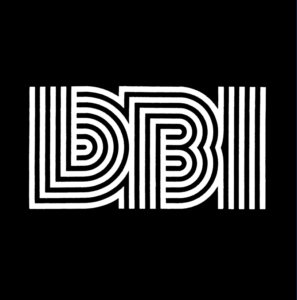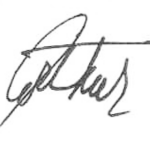In honor of DBI Architects’ 50th anniversary, DBI Founder Arthur Auerbach wrote the following letter, which was read aloud to attendees by DBI Principal Roseanne Beattie at DBI’s 50th Anniversary Alumni Celebration on Saturday, May 6.
Some of you may know I founded DBI in 1972 and guided the firm for the first ten wonderful years. I am honored to be part of the celebration of DBI’s 50th anniversary.

DBI Founder Arthur Auerbach, 1973
I’d like to begin by expressing my heartfelt thanks to Al Storm and everyone at DBI for moving the company forward into the 21st century. I believe that what he and all of you here today have accomplished in the last 40 years is astounding and beautiful.
I am not an architect or designer. I feel fortunate to be blessed with a sense of and appreciation for art, architecture, and design, which, while not part of my experience growing up, increased over time through curiosity and exposure.
I am by nature an onlooker, an introvert by temperament. I have spent much of my life looking at things and analyzing how they affect my sensibilities. Even though I realized at an early age that in order to succeed you had to overcome your shyness, now in my 80-plus years I am reminded almost daily that I am still a card-carrying introvert at heart.
Back in the 1970s when I was in my early 30s and newly single, I had already worked many years for an office furniture retailer. The thirties are an important decade for most of us: it’s when we begin to think about things seriously. Family, career, the full stream of what we want to do with our lives. Where are we going and how do we get there? I call it the trauma of the 30s.
One day I was talking with a friend and told him I was trying to figure out how me, a single guy with a kid, could pay less in taxes and risk taking on a new enterprise. He suggested I start my own business, to which I replied that I had no money for that. “Apply for a small government business loan,” he said, “and I will help you with your application.”
I barely had enough for a good faith deposit to get a loan, but we began the process on a wing and a prayer. After being turned down by several banks, one finally loaned me the necessary funds.
Sometimes the wrong train takes you to the right station. I don’t know where my love for architecture, design, and art came from. Growing up in Washington I remember visiting New York City in the 60s and 70s when D.C. had a reputation for being at least two years behind in cuisine, design, and certainly architecture.

Staff at the original DBI Showroom, 1973
I dreamed of creating an office design firm for the business community, employing highly skilled architects and designers, and using innovative marketing to the real estate leasing companies as well as some clever print advertising. While attorneys, architectural firms, and design firms had a history of not advertising their services, by the 1970s it was starting to happen.
I wanted the new office to be in a convenient location with a beautifully designed space to show the world our talent. Every law firm, trade association, and lobbying organization had offices in downtown D.C., but no one wanted to lease office space to a newly created design firm. We were unproven, but we were able to rent a former storage basement at 17th and M Street NW, right across the street from the National Geographic Society headquarters.
The newly designed office space was so classically beautiful that sometimes I would leave my apartment in the middle of the night, go there, turn on all the lights and be in awe that I was part of the team that created it.
It was 1972, a time when we had no computers, no cell phones, no CAD machines. Everything was done by hand.
What we did have was the greatest group of people you could ever imagine. It was a dream staff that was so compatible we even had four marriages in ten years, including my own. Ask Steve Swaney about that.
Now, 50 years later, I look back with great pride. I’ve always wanted to minimize the number of regrets that I have in my life as most of our regrets are the result of omission—the things we didn’t try, the paths we didn’t unravel. Those are the things that haunt us. I decided that if I didn’t give it my best shot, I would always regret not trying to be part of something I thought at the time was going to be great.
In addition to good luck and great people, we were successful as a company because we continued to take risks. To invent, you have to experiment.
First, you have to identify a need. Then you’ve got to fill the need that’s out there. You’ve got to have somebody to promote your services. Prospective clients didn’t knock down the doors to hire commercial design firms because what we created was behind closed doors in office buildings. We had to aggressively market to find clients.
And if you really want to win big, you’ve got to have a uniqueness, something a little bit different from all the competition out there. Great, highly creative people make the difference.
But by far the most important thing you’ve got to have to be successful in business is a very unique kind of mental toughness. I believe the difference between winning and losing in the free enterprise system is so small it’s almost too scary to think about. You can get 99% of the things right in business, and yet if you don’t possess what I call “that winning edge” – that mental toughness – it’s impossible to succeed.
Creating DBI demonstrates that, every once in a while, a regular person like me can create something that has enormous consequences. You can have equal measures of empathy and ego and be a good person, but you’ve got to have that ambitious edge to make things happen.

DBI’s original logo from 1973.
A lot has changed since 1972. No doubt some of you were very young or weren’t even born. Back then, the country was still rebuilding and remolding after the 1968 riots that destroyed much of D.C. and other cities.
To put it in context, in 1972, the year I founded the firm, it was a very different time:
- Richard Nixon was the 37th President of the United States.
- The Academy Awards was celebrating its 44th year The Godfather was supposed to win but The French Connection won Best Picture.
- Gene Hackman won as Best Actor in a Leading Role.
- Jane Fonda won Best Actress for her role in Klute.
- The top Billboard Year-End Hot 100 singles of 1972 were recorded by Roberta Flack “The First Time Ever I Saw Your Face” and Don McLean’s “American Pie”.
- The top-rated TV shows were All in the Family, Sanford and Son, and Hawaii 5-0.
- Only 8 percent of American homes received basic cable.
Fast forward to 2023, when I am told downtown D.C. has been reduced to a fraction of its former self because of all the remote workers who are staying home. I leave it in the hands of DBI to continue in its quest to be pioneers of the evolution of design.
Once again, my heartfelt thanks for including me in this celebration and for all of you moving DBI forward with vision, hard work, and creativity.
A thousand thanks to:
Al Storm, my pal of 50 years; the great Steve Swaney; Jim Montgomery; designer Ray Lawson for helping design the first beautiful lower lobby DBI offices; the wonderful, talented Celeste Hart; office staff Laura Peretta, Christine Reck, and Martha Feldman; and architect Tom Kerns, designer Nick Lambros, and architect Al Hanson, who single handedly designed the street level 17th & M Street space.
Here’s to another 50 years!

